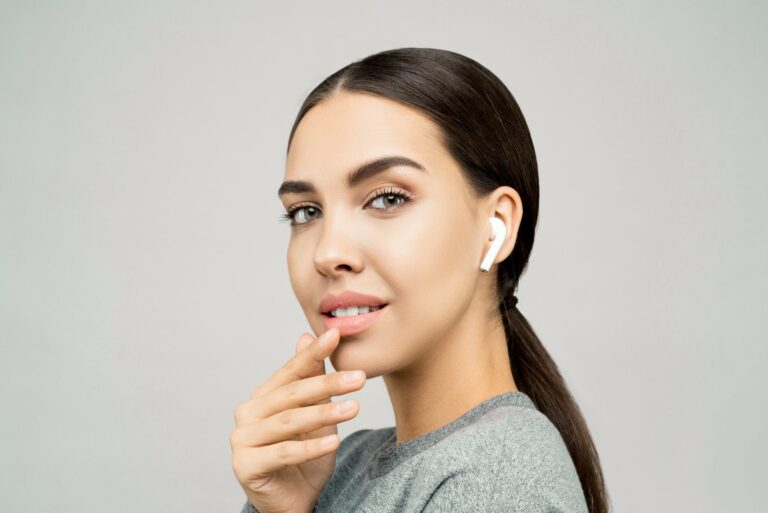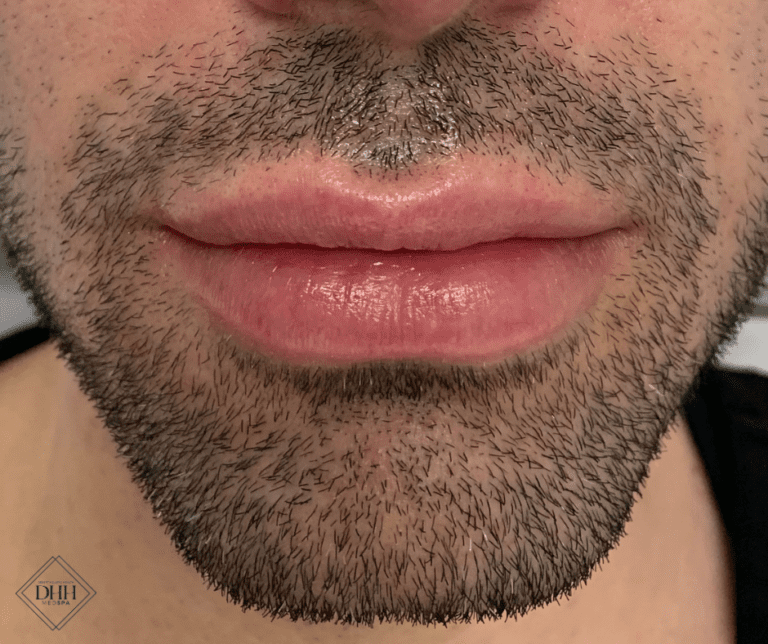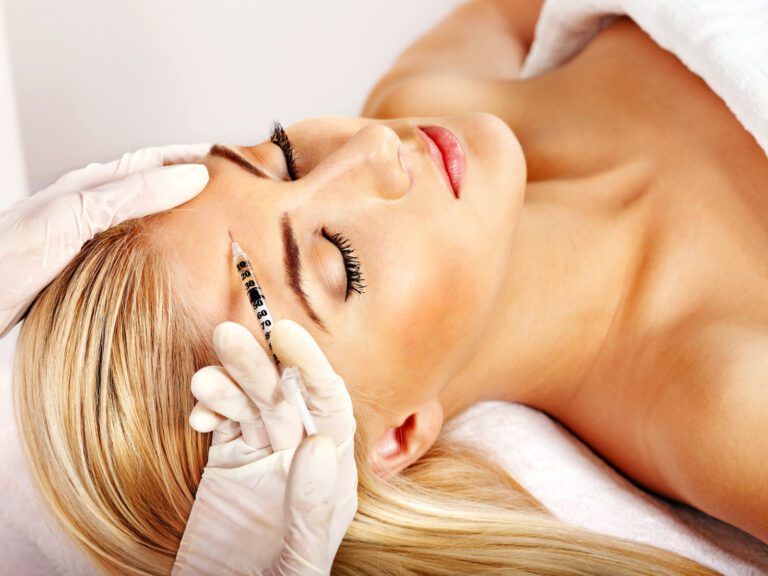Are you considering enhancing your lips for a fuller, more youthful appearance? Lip fillers have become increasingly popular for those seeking a natural-looking boost in lip volume without the need for invasive surgery. In this comprehensive guide, we’ll walk you through everything you need to know about first time lip fillers, from understanding the different types available, to ensuring a successful treatment and maintaining your new, luscious lips.
Key Takeaways
- Understand lip fillers and their types before treatment
- Choose a credentialed provider and disclose any medications or supplements taken beforehand
- Maintain desired results with follow up treatments every 6-12 months
Understanding Lip Fillers
Lip fillers, a type of dermal filler or soft tissue fillers, have become the go-to cosmetic treatment for those looking to achieve fuller, plumper lips. These injectables are comprised of synthetic hyaluronic acid, a substance naturally found in our bodies that adds volume and hydration to the skin. Various brands such as Juvederm, and Restylane offer different experiences, thus understanding their differences and what to anticipate during your initial lip filler treatment is beneficial.
Being mindful of the lip filler swelling stages after lip filler application, which can persist for up to two weeks, is also key.
What are lip fillers?
Lip fillers, also known as lip injections, are a non-surgical cosmetic treatment designed to increase lip volume and provide a more youthful appearance, ultimately boosting self-esteem. In fact, the FDA has approved lip fillers for individuals aged 21 and older, making it a popular choice for those looking to delay surgical lip augmentation.
The lip filler injection process involves injecting hyaluronic acid into the lips, achieving a natural enhancement that many first-timers find appealing.
Types of lip fillers
Lip fillers come in various forms, including both temporary and permanent options. However, hyaluronic acid-based fillers are the most prevalent choice for enhancing both the upper and lower lip.
Topical numbing creams are often used to minimize discomfort during the injection process, ensuring a more comfortable experience for the patient. Some FDA-approved hyaluronic acid-based fillers for lip augmentation include Juvéderm® Volbella XC, Juvéderm® Ultra XC, Revanesse Versa and Restylane® Kysse.
Preparing for Your First Lip Filler Treatment
Before embarking on your lip filler journey, conduct thorough research and choose a credentialed provider for the procedure. This can help ensure a safe and successful treatment with minimal complications.
Before your appointment, make sure to reveal any medications and supplements you’re taking, since some might influence the procedure and heighten the chance of side effects, like lip swelling.
Choosing the right provider
Selecting the right provider for your lip filler treatment is crucial for a successful outcome. It’s recommended to consult with a licensed professional, the intials CANS behind their name will indicate a nurse or nurse practitioner is board certified in aesthetics. Although all procedures come with risks, using an untrained professionals can increase the chance of severe damage, such as injecting into a blood vessel or damaging a nerve.
By doing thorough research and finding a qualified provider with a track record of success, you can set realistic expectations and ensure a safe and effective lip filler treatment. Your provider should be happy to show you their portfolio with many before and afters photos of lip filler injections.
Disclosing medications and supplements
Before your lip filler treatment, you must let your healthcare provider know about any blood thinning medications, vitamins, or supplements you’re currently taking. Certain medications and supplements can thin the blood or increase the risk of bruising, affecting the healing process and the final results of the treatment. Other supplements or medications that may thin the blood include fish oil, aspirin, and warfarin.
Be sure to abstain from alcohol for 24 hours prior to your appointment to minimize the risk of side effects.
The Lip Filler Procedure
The lip filler procedure is a quick and relatively simple process, typically taking between 20 to 60 minutes. During the procedure, a topical anesthetic is applied to the lips, followed by the careful injection of the filler into specific areas of the lips to enhance their volume and shape. For those considering getting lip filler, it’s important to consult with a qualified professional to ensure the best results.
Adhering to your provider’s aftercare instructions is vital for a smooth recovery and best possible results. Lip filler swelling stages can be discussed with your provider and are very temporary. In general, swelling with dermal fillers resolves within a few days to weeks. If you are concerned about lip swelling and have events coming up, plan to receive your dermal filler treatment two weeks prior.
Anesthetic application
Ensuring patient comfort during the lip filler procedure is a top priority for providers. To achieve this, a topical anesthetic, such as a compounded cream containing benzocaine lidocaine and tetracaine is typically applied to the lips before the injection process.
This numbing effect, provided by the topical numbing cream, helps minimize any discomfort during the treatment and allows the patient to relax as the filler is skillfully injected.
At DHH Med Spa in Scottsdale, we offer additional options for comfort including dental blocks, pronox laughing gas, distraction methods, ice and tylenol.
Injection process
The actual injection process for lip fillers is quick and straightforward. The provider will carefully inject the filler, usually hyaluronic acid, into specific areas of the lips, taking only a few moments per site. Lip fillers typically involve the use of hyaluronic acid as the primary ingredient.
For safety reasons, puncturing the lips from the vermillion border and avoiding injections into specific areas is necessary. The most common method of injection is using regular needles versus cannula, ensuring precise and controlled placement of the filler.
Post-Treatment Care and Recovery
Following your lip filler treatment, appropriate post-treatment care and recovery are key to attaining optimal results. This includes managing any swelling and bruising that may occur and scheduling follow-up appointments with your provider to assess the results and discuss any necessary adjustments.
Managing swelling and bruising
Swelling and bruising are common side effects of lip fillers, but with proper care, they can be managed effectively. Applying an ice pack and arnica can help reduce lip filler swelling and bruising, which typically last a few days after the treatment. At DHH Med Spa we also offer the Alastin post injection serum with chromafade which cuts bruising time in half!
Adherence to your provider’s aftercare recommendations can curtail discomfort and guarantee a seamless healing process. Ingestion of any blood thinning products for 24 hours post injection of dermal fillers can still mean bruising worse, also avoid alcohol within this time frame.
Avoid strenuous exercise, steam rooms or anything that heats up the body for 24 hours.
We also recommend the Mizzi lip luxe products to help maintain your lip filler results. These products were specially formulated to hydrate the lips post injecting fillers. We offer this in our Scottsdale office so be sure to ask!
Follow-up appointment
Scheduling a follow-up appointment with your provider is not mandatory, but may be helpful in the lip filler process. This appointment allows your provider to assess the results of the treatment and discuss any adjustments that may be needed such as adding more filler.
Attending these appointments can help to confirm your satisfaction with the final result and address any concerns or that may have surfaced post-treatment. Sometimes a lip flip can be added at the appointment with 2-8 units of Botox just to enhance the results.
Potential Risks and Side Effects
Although lip fillers are typically deemed safe and effective, awareness of potential risks and side effects that may arise is paramount. Common side effects include swelling, bruising, and tenderness, but more severe complications can arise, especially if the procedure is not performed by a qualified professional.
Be sure to communicate with your provider if you experience any persistent or worsening side effects after your treatment such as pain or discoloration.
Common side effects
Mild bruising, swelling, redness, and tenderness at the injection site are common side effects of lip filler treatments. In some cases, lip filler treatments can also reactivate cold sores or the herpes simplex virus 1 (HSV-1).
If you experience any of these side effects and they persist or worsen, it’s important to consult with your provider for guidance and appropriate treatment.
Achieving Natural-Looking Results
A primary objective of lip filler treatments is to attain a natural-looking enhancement. Clear communication with your provider and a gradual approach to treatment are vital to securing the best possible outcome.
This will help you achieve the desired lip volume and appearance while minimizing the risk of complications.
Communication with provider
Discussing your aesthetic goals with your provider is crucial for ensuring realistic expectations and avoiding overfilling. Through effective communication, your provider can customize the treatment to fulfill your expectations and ensure your satisfaction with the end result.
Be sure to express any concerns, provide a detailed medical history, and clarify your expectations during your consultation.
Gradual approach
Opting for a gradual approach to lip filler treatments offers several benefits. It allows for a more natural-looking and balanced result, as well as the ability to make adjustments during subsequent sessions.
Starting with a small amount of filler and adjusting as needed in follow-up appointments can help minimize the risk of complications and provide better control over the final result.
At DHH Med Spa in Scottsdale we offer 1/2 syringes of select products or can recommend supporting areas to use the remaining product.
Lip Filler Longevity and Maintenance
Given the temporary nature of lip filler results, planning for touch-up treatments to uphold your desired lip volume and appearance is essential. The duration of lip filler results varies depending on the brand and individual factors, typically lasting between 6-12 months.
By scheduling regular touch-up treatments, you can keep your upper lip and the rest of your lips looking full and youthful.
Duration of results
The longevity of lip filler results can vary depending on the brand and individual factors, such as age, lifestyle, and skin type. On average, lip filler results last between 6-12 months, making it important to plan for touch-up treatments to maintain the desired appearance.
Touch-up treatments can help to extend the longevity of the results, and can be done to extend the results.
Touch-up treatments
Touch-up treatments play a pivotal role in preserving the desired lip volume and look. These treatments are typically administered every 3-9 months, allowing you to make any necessary adjustments and ensure your satisfaction with the final outcome.
Regular touch-up treatments can help you maintain the desired look and feel of your lips, at that time your aesthetic provider can discuss your treatment plan to address the face as a whole with dermal fillers and other skin care products.
Summary
In conclusion, lip fillers offer a safe and effective way to enhance your lips and achieve a more youthful, natural-looking appearance. By selecting a qualified provider, clearly communicating your aesthetic goals, opting for a gradual approach, and scheduling regular touch-up treatments, you can enjoy plump, beautiful lips for years to come. Embrace the confidence that comes with loving your new lips!
Frequently Asked Questions
What to expect when getting lip filler for the first time?
Expect to have a slight pinching sensation during the procedure, as well as possible bruising. Swelling is also normal afterwards.
Following both pre-treatment and post-treatment instructions is vital for best results.
Do lip fillers look bigger at first?
Yes, lip fillers can appear larger at first due to trauma, however the effect should subside after a few days to a week.
Should I get 0.5 or 1ml lip filler first time?
For a first-time lip filler experience, 1 ml is sometimes recommended however during the consultation goals will always be discussed to determine how much product is right for you. Factors that affect this answer include lip size and shape, desired outcome and which product is being used.
How long do lip filler results typically last?
Lip filler results typically last 6-12 months on average.
How can I minimize swelling and bruising after lip filler treatment?
To minimize swelling and bruising after lip filler treatment, apply ice packs and arnica for a few days. We also recommend Alastin’s post injection serum. Ask about the pineapple paks as well in our office. This is a powerful supplement called inflaquell by Researched Nutritionals that really helps healing!







